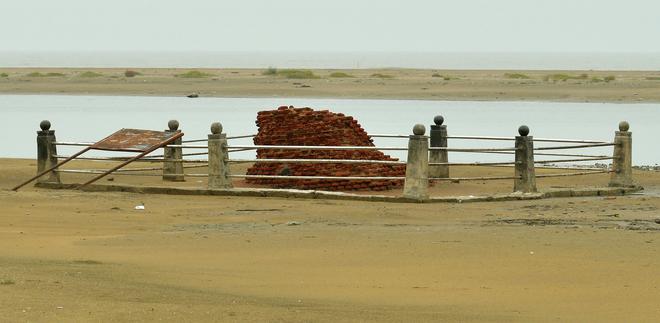When Sundarar, the 8th Century devotional poet and one of the Saivite minstrels, visited Kodiyakkarai, or Point Calimere, in Nagapattinam, he could not bear the sight of Kuzhagar, the presiding deity, residing in the midst of an impenetrable forest.
“Evil are my eyes that see the sight,” he exclaimed. “When there are so many temples that devotees are visiting in droves, why do you choose to be here in the thick forest?” he lamented. The deity is also known as Amuthakadeswarar.
Point Calimere is also a wildlife and bird sanctuary, its shallow waters and marshes providing an ideal feeding site for migratory birds, especially the flamingos that arrive by the thousands every year.
Readers familiar with Kalki’s epic Ponniyin Selvan are likely to associate the place with the character Poonguzhali, the Kuzhagar temple and the lighthouse near the sea from where Vandhiyadevan would begin his journey to Sri Lanka in a boat rowed by her.
Kalki noted that the condition of the temple had not changed even by the time he was serialising the novel in his magazine.
Even today, only a few devotees visit the temple, which is situated on the Sethu Rastha in the Kodiyakkadu revenue village. The number of visitors increase only during Vaikashi Visakam. With thick forest spreading from the north side of the temple, and the sea on the east, the spot offers a throwback to the days of the Chola Empire.
“It was Kalki who shed light on the temple and secured it a permanent place in history through his writings. The temple possesses no inscriptions of significance. It cannot boast of any great architecture,” said R. Kalaikovan, director, M. Rajamanickanar Institute of Historical Research.
An official of the Hindu Religious and Charitable Endowments (HR&CE) acknowledged that if a few tourists still trickled in, it was only because of the novel.
A pivotal role
Kodiyakkarai plays a key role in the novel. It is while sitting in the temple and eating the kernel of a coconut that Poonguzhali first spots Vandhiyadevan and tries to run away from him. He chases and makes her trust him by introducing himself as an acquaintance of Senthan Amudhan, her cousin, whom he had befriended in Thanjavur. One could say without doubt that the narrative style of Kalki reaches its peak here.
His description of the old temple, Poonguzhali’s singing prowess, the quicksands in the vicinity and the fearsome will-o’-the-wisp hovering over the marshes at night and the blood-red fire atop the lighthouse burning through the night, all these and more make the chapters unputdownable.
It was during that period, the Cholas were waging a war in Sri Lanka, and boats of all sizes had moved to Rameswaram from Kodiyakkarai to assist the Chola armies in that country.
The story is narrated through Thiyagavidanga Karaiyar, the keeper of the Lighthouse and the father of Poonguzhali.
It was he who advised Vandhiyadevan to take the help of Poonguzhali to reach Sri Lanka.
Relic of the past
The lighthouse, over 1,000 years old, has all but disappeared. The last remnants of the brick structure are still there, telling visitors how the Cholas could build a powerful empire with the might of their navy.

Though Kalki writes that the lighthouse was built by the Chola king Parantaka I, an analysis of the bricks of the base indicated that it should have been constructed earlier by the Pallavas. Three-fourths of the structure remained even in the 1960s, but negligence and indifference seem to have caused it to very nearly disappear.
Tamils have regularly visited Sri Lanka from Kodiyakkarai since time immemorial. Kalki’s description of thick forests still fits the area, making it quite ideal for clandestine activity. It is no surprise that it was notorious for smuggling activities and was also a landing and exit point for Sri Lankan Tamil militants in the 1980s and early 1990s.







